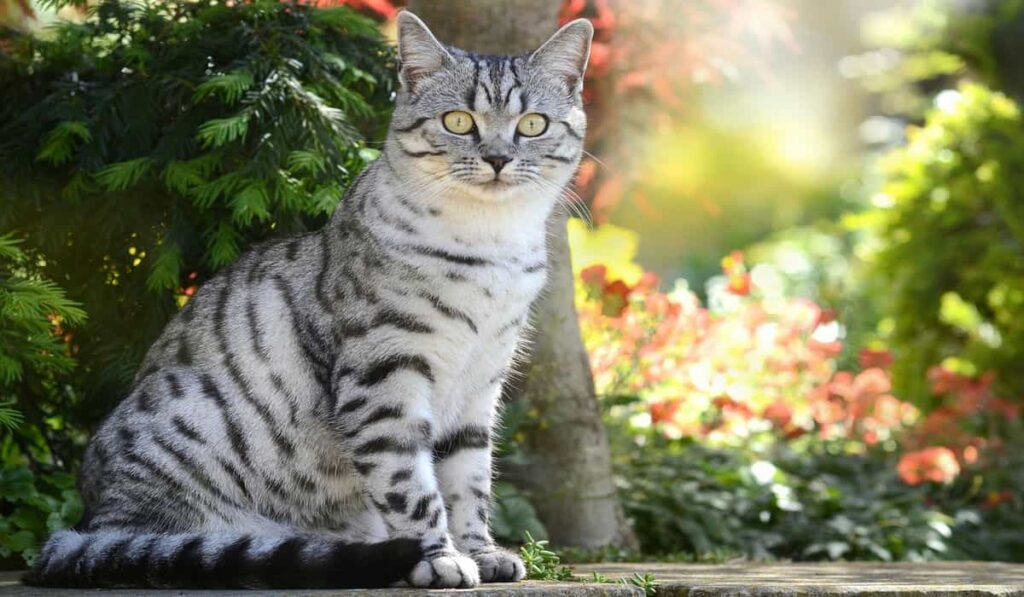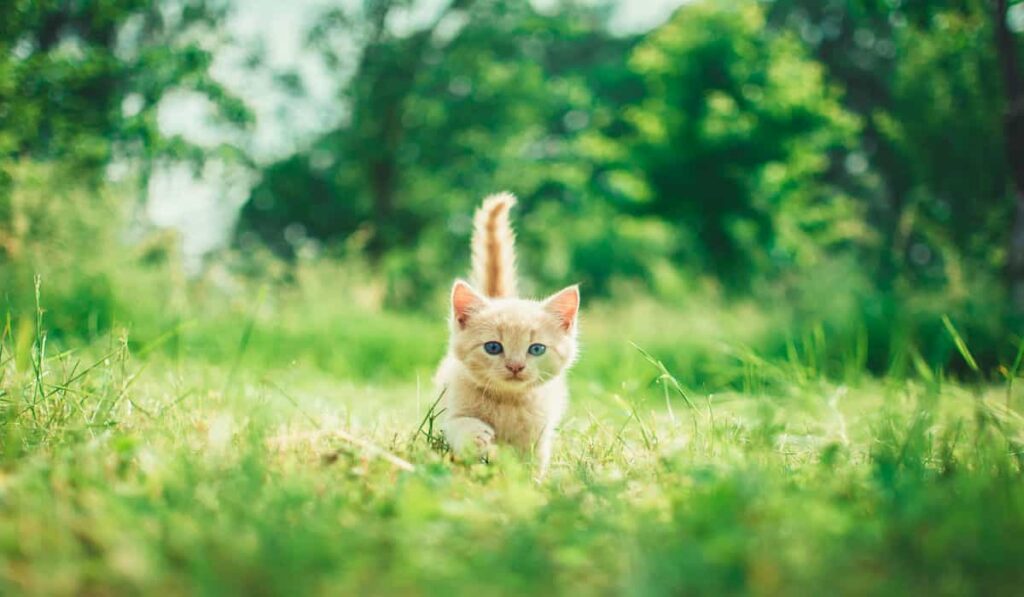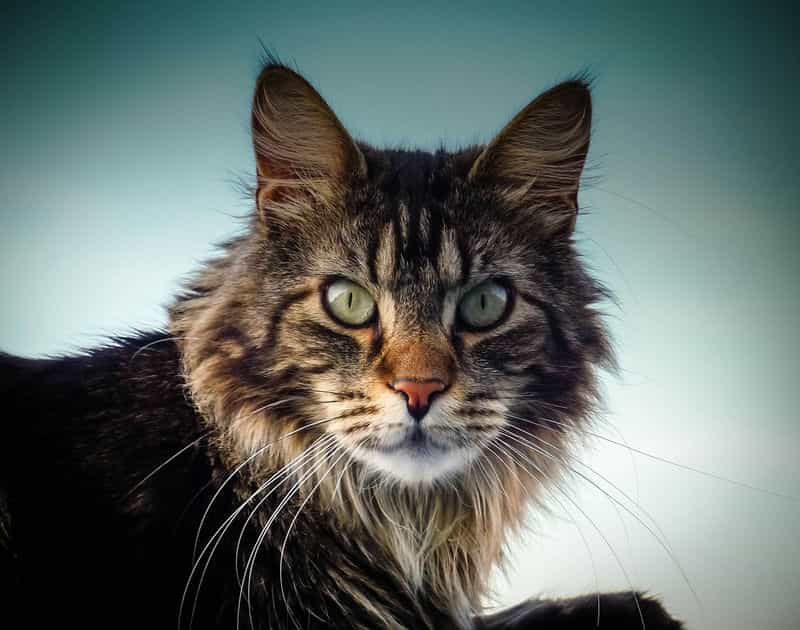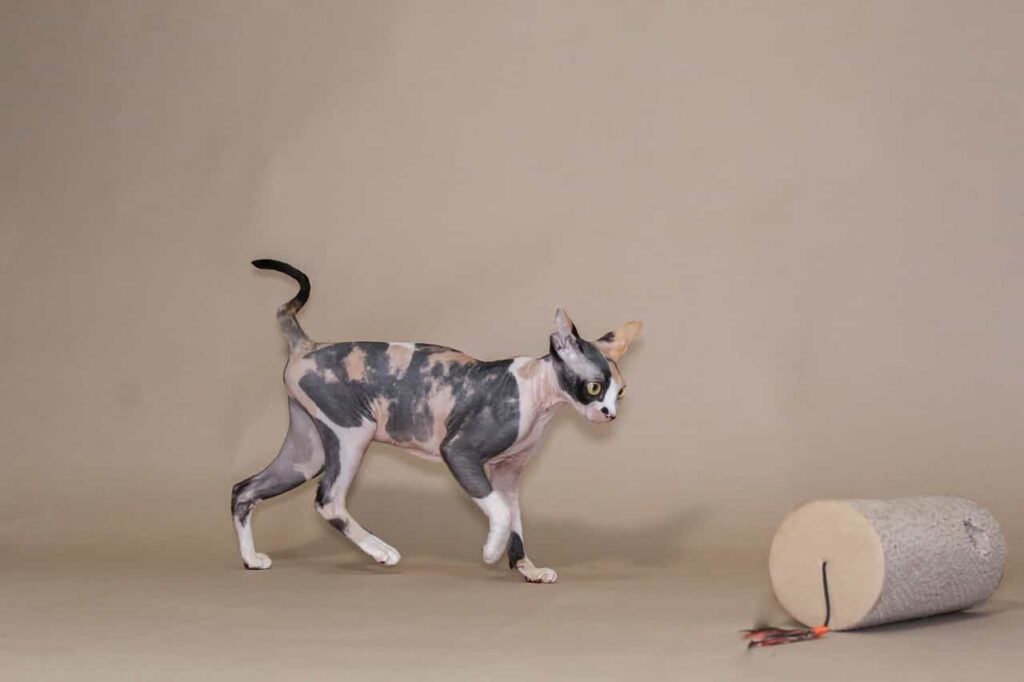Embark on a fascinating journey into the world of the Balinese cat, a breed renowned for its luxurious long hair, captivating blue eyes, and affectionate nature. This comprehensive guide will provide you with insights into everything from “adopting a Balinese cat” to understanding their unique “Balinese cat temperament.” Discover the intricacies of “Balinese cat grooming” and delve into the specifics of “Balinese cat food and nutrition.”
Whether you’re a seasoned Balinese cat owner or considering welcoming one into your home, this guide covers essential “Balinese cat training tips,” “feeding guidelines for Balinese cats,” and key information on the “lifespan of Balinese cats” and associated “health issues.” Join us as we explore the charming world of Balinese cats, providing you with the knowledge to ensure their health, happiness, and well-being.
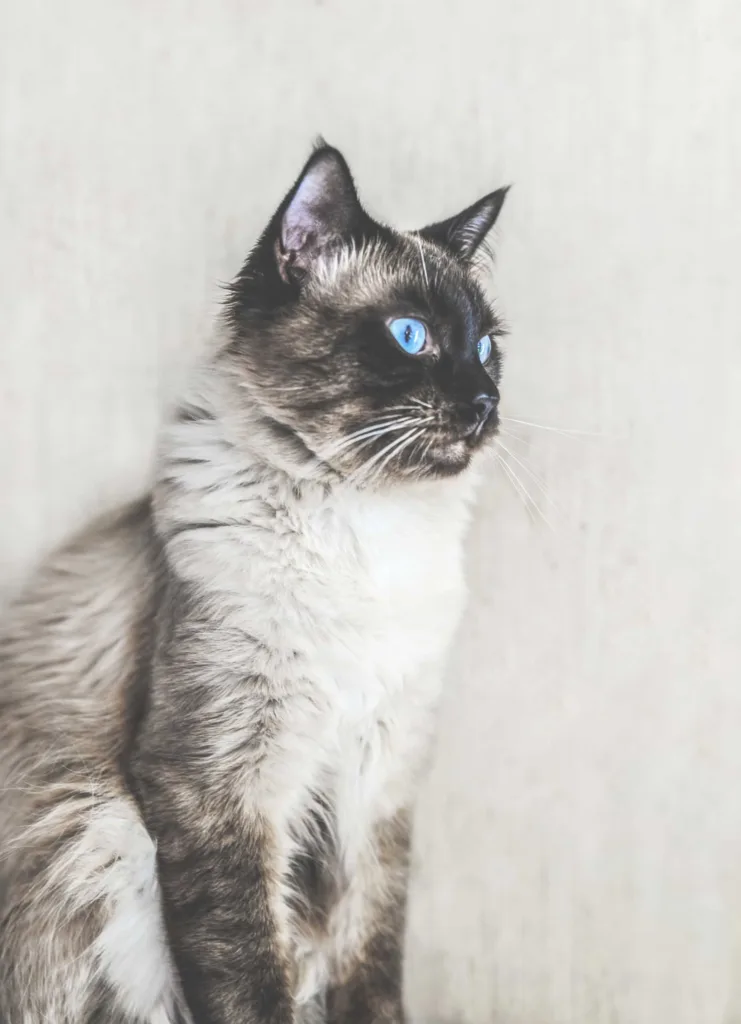

Table of contents
About Balinese Cat Breed
Balinese kittens
Like the other breed of kittens, Balinese kittens also show their playfulness. So, you must provide them with
scratching posts, toys, high perches, tall cat trees, and other interactive toys. They are born with a White and Cream coat after 3 weeks of birth.
Balinese Purebred VS Mixbreed
There are 2 body types of Balinese cats- Traditional or Old style and Modern or American style. Both have Blue eyes, medium-sized bodies, and firm and fine bone muscles. The longhaired Balinese are a bit larger than the Shorthaired Siamese breed.
The Javanese breed results from crossbreeding between Balinese cats and Colorpoint Shorthair cats. As a result, Javanese have over 40 color sheds. The Javanese breed is considered a separate breed in the American standard by the Cat Fancier’s Association (CFA), Balinese Breed Council, and Javanese Breed Council.
The Javanese breed includes other colorpoints besides the Balinese breed, such as Blue, Seal, Lilac, and chocolate. Cat Fancier’s Federation (CFF) and other associations also granted Red, Cream, Tortoiseshell, and Lynx point.These cats are crossed with Oriental Longhair, Colorpoint Shorthair, Siamese, and Javanese breeds. If a Javanese is crossbred with a Siamese, it’ll come with a shorter coat than the Balinese breed.
Breed specialty of Balinese Cat
Other names:
Longhaired Siamese, Javanese, Thai Siamese.
Personality traits:
Intelligent, active, playful, affectionate, dependent, social, Friendly with polite children, and cat-friendly other pets.
Length:
About 18 inches
Weight:
Up to 11 Pounds
Coat patterns:
Colorpoint
Coat length:
Semi-long
Coat colors:
Creamy white body with Chocolate color points on the face, ears, legs, and tails.
Eye colors:
Deep Blue with variations.
Hypoallergenic:
Yes, sometimes.
Lifespan:
Up to 20 years if taken good care of.
Care and grooming needs:
High
Vocalizing level-
High
Origin:
USA
Types of Balinese cat and their various colors
The Traditional Balinese cats come with robust bodies and wider heads, and the Modern (American) Balinese cats have more slender bodies, triangle-shaped heads, and wider and longer ears. Some associations also considered the Violet eye colors of Balinese cats.


The list of the Balinese extended pointed coat colors:
- Blue
- Chocolate,
- Seal
- Lilac
- Red
- Cream
- Tortoiseshell
- Lynx
Origin of the Balinese Cat breed
Balinese don’t have any connection with Bali or the Java islands of Indonesia. In fact, it is related to Thailand as their ancestors were Siamese cats from Siam (Thailand). Actually, Balinese cats are the fault in the bloodline of the Siamese cats and were recognized later as a separate breed.
The record of the early 1900s says that American Cat Fancier’s Association (ACFA) registered the breed as show cats in 1928. The American breeders became interested in sustaining the breed in the mid-1950s. Helen smith was the initial breeder of Balinese cats, and she dubbed the name Balinese being inspired by the grace of Balinese dancers.
Moving forward, Sylvia Holland played an important role in spreading the Balinese cats in the decade of the 1960s and 1970s. Balinese cats were split into two different varieties based on their physical traits- The traditional and the extreme.
But by the mid-1980s- the traditional Balinese disappeared from most cat shows, and the extreme type was upheld as Balinese cats. The Cat Fancier’s federation gave official championship status to the breed in 1961.
The appearance of the Balinese Cat breed
Body:
A Balinese cat’s body is medium-sized with firm, fine bones and muscles. Shoulder and hips are sleek and tubular and the same in size. Their abdomen is always tight without fats.
Head:
Their head is also medium size with the tapering wedge, finely adjusted with the body. Their V’ shaped face gives a unique look. A long and straight nose is situated like a bride on the face.
Ears:
Two pointed, wide-based, and medium-sized ears are situated at the corner of the head.
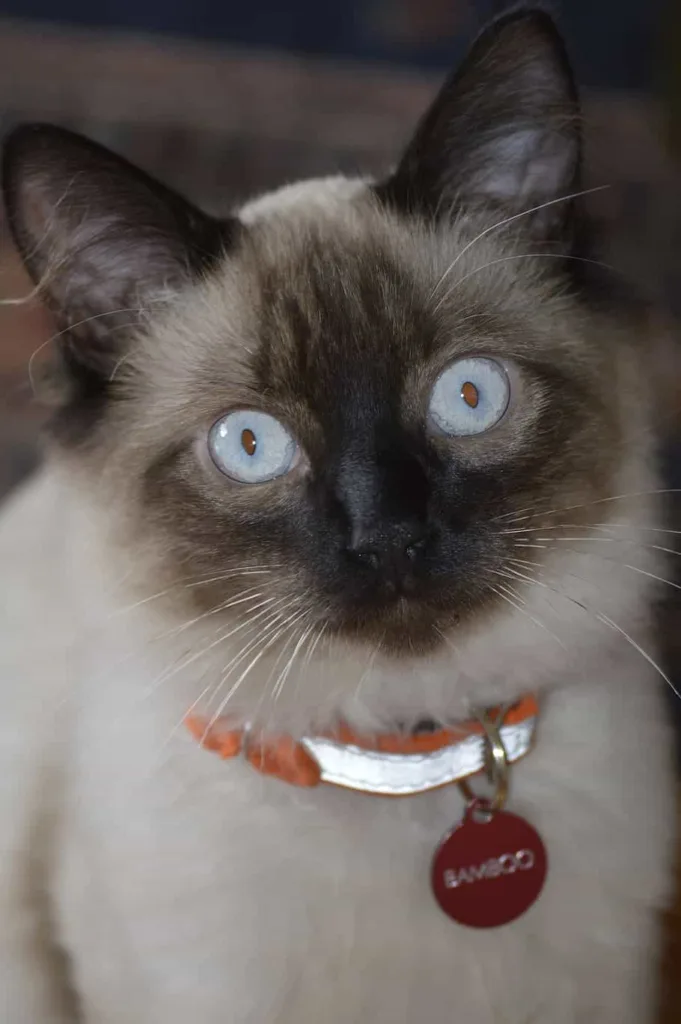

Eyes:
Floating, Almond-shaped blue colored eyes give the breed a royal look, just like the royal Siamese. Some Balinese also have crossed eyes.
Legs and paws:
Legs are medium and slim with strong bones. The back legs are longer than the forelegs. Paws are small and oval, with five fingers at the front and four at the back.
Tail:
Their tail is different from the Siamese. Long, thin, and tapering to the point. Hairs on their tail are just like bird feathers.
Coat:
Semi-long and colored point coats lying on the body. The coat comes in Creamy White and Chocolate color.
Temperament and nature of Balinese cats
We already know that Balinese cats are intelligent, playful, curious, chatty, opinionated, and crave human interaction. They don’t hesitate to express their feelings. They act as if they’re talking to you and seek attention. But Balinese cats vocalizing is sweet and soft and also not frequent. If you like quiet cats, then Balise is not suitable for you.
They enjoy their human family and love to be helpful and follow you around the house. They keep an eye on your activities if you need their help. A loyal and devoted companion- perfect for lonely people who are not so busy.
As they’re very intelligent, they need mental stimulation. They like to play feather games with their owners. Balinese cats tend to exhibit negative behavior when getting bored. They suffer from separation anxiety- which means they can’t stay alone for an extended period.
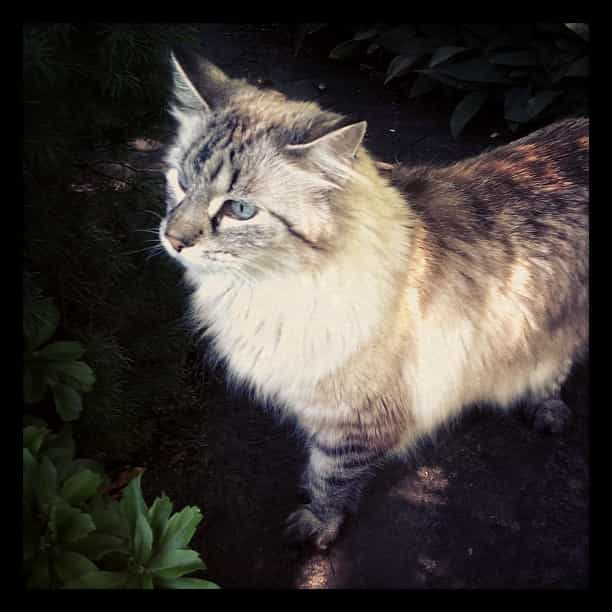

They need a busy household and a full family. And, they also need strong stimulation and interaction with their family. If they are left alone for long hours, they may show destructive behavior like scratching your furniture and loud vocalizing.
So, if you live alone or with your spouse,n please keep 2 cats at your house. They belong to a territorial attitude from their ancestors. So, if you need to keep 2 cats, adopt the Balinese during their childhood and introduce them to other pets.
Caring, grooming, and exercise that Balinese needs
Balinese cats don’t need too much maintenance. They don’t have undercoats. So the coats don’t get tangles or mats. Just weekly one-time brushing is enough, but while they shed, increase the brushing times to avoid loose and dead hairs. Just take care a bit more of their ears as the ears are prone to get dirty. The cares of the cats are the same as the other cars.
However, the Balinese are very active, playful, and interactive. So, provide them with puzzles, interactive toys, long cat trees, Scratching pots, and enrichment ideas. Always keep them busy until they need rest and cuddles. They also need a lap time.
Keep an eye on their training. Keep a short and funny training session so they can learn to socialize. Also, give them litter training at a young age. Use some cat toys and treats to give them mental stimulation. Training means Positive Reinforcement.
Health and problems of Balinese cat
Progressive Retinal Atrophy:
It is the most common problem in Balinese cats. They also have crossed-eye and Glaucoma problems.
Crossed eyes:
It is the result of abnormal retinal pathways. But it doesn’t make any difficulty in their normal life.
Dilated Cardio Myopathy:
Heart walls weaken and make obstacles to blood generation and circulation- it is called Dilated Cardio Myopathy.
Congenial Heart defects:
Hypertrophic Cardiomyopathy and Aortic Stenosis. It is called a Congenial Heart defect when the heart walls get thickened and makes obstacles to pumping and circulating blood.
Lever Amyloidosis:
When Amyloid Protein is deposited to the Lever and makes it fail to function, it is called Lever Amyloidosis.
Asthma and Bronchial Disease and infections: A very known problem.
Neurological problem:
It is also called Hyperesthesia Syndrome, which causes excessive grooming and licking. Another problem is called Nystagmus- which causes rapid eye movement.
Besides, Belize also has Bladder stones, Cancer, kinked tail, Lymphoma, and gastric problems.
Some facts about Balinese cat
- They’re very possessive about their owners and don’t like other pets getting closer to their owners.
Cons of Balinese cat
- Balise are a very vocal breed; they can chat constantly.
- You can’t leave them alone for long periods. You have to take steps to remove their loneliness.
- They need a lot of mental stimulation. It may create a problem in your busy life.
Breed overview of Balinese
The breed results from a fault in the bloodline in Siamese cats- which means it’s a genetic mutation. The main point is that Balinese cats are the longhaired version of Siamese cats. The origin of the Balinese breed Thailand is just like the Siamese cats. Though the main coat color of Balinese is White and Cream, with only chocolate points later, many color points have been recognized as their coat colors.
The basic eye color of Balinese cats is Deep Blue.
The talkative cats are 18 inches in Length and 11 pounds in weight.
Differences between Balinese and Siamese cat breeds
Well, the main difference is in their coat length. Siamese cats are short-coated, and Balinese cats are long-coated. The Balinese breed is the longhaired version of the Siamese breed.
The Siamese breed came from Siam (Thailand) and crossed with the other cats later, and the Balinese cat breed is a natural mutation. A fault in the bloodline of Siamese cats. Balinese cats have an undercoat as their long-coated, whereas Siamese is a short-coated breed. They don’t have any undercoats.
Besides the coats, Balinese cats have a more triangular head shape, a long and narrow muzzle, wider ears, and sleeker bodies than the Siamese. Their paws are also large to support muscular bodies. Otherwise, the rest of the things are the same.
From where to adopt a Balinese cat?
There are some associations’ websites where you can find the breeders list:
- Petfinder.com
- and Adopt-a-pet.com.
Purchase your Balinese from a reputed and trusted breeder. A study and paperwork are essential before adopting any pet. You can find shelters and rescue groups to adopt a Balinese cat.
During adoption:
Check out for those things- vaccinations, microchips, deworming, certificates, and test results conducted on the pet.
After adoption:
Take your cat to the vet for a breed test and health check-up, and learn how to care for the cat from the breeder.
Adopting and Living with a Balinese Cat
Adopting a Balinese cat is a decision that brings immense joy and companionship. Understanding what it means to live with this breed, known for its “Balinese cat temperament” and “long-haired Siamese cat” lineage, is crucial. When considering “adopting a Balinese cat,” it’s important to research their needs, from “Balinese cat grooming” requirements to their social nature. Balinese cats, often compared to “Siamese cats,” share many traits but have distinct personalities.
Living with a Balinese cat means providing regular grooming to maintain their luxurious coat, addressing “Balinese cat health issues,” and ensuring a stimulating environment. These cats are known for being affectionate and social, thriving on interaction with their human companions. Therefore, understanding the “social behavior of Balinese cats” is key to ensuring their emotional well-being. Prospective owners should also consider “Balinese cat allergy information,” as their long fur may require more maintenance.
Balinese Cat Food and Nutrition
The health and vitality of a Balinese cat largely depend on proper nutrition. “Balinese cat food and nutrition” should focus on high-quality ingredients that cater to their specific dietary needs. “Feeding guidelines for Balinese cats” recommend a balanced diet rich in proteins and essential nutrients to support their long, silky fur and overall health. When selecting food, consider both commercial options and “homemade diets for Balinese cats,” ensuring they are appropriate for their age and activity level.
It’s essential to be mindful of “Balinese cat health issues” that can be diet-related, such as obesity or digestive problems. A diet tailored to their “long-haired Siamese cat” ancestry can help manage these issues. Regular consultations with a veterinarian can provide guidance on the best dietary choices, whether your Balinese cat is a kitten, an adult, or a senior. Additionally, understanding their “social behavior” can also inform feeding practices, as these cats may prefer company during meals
Balinese Cat Training Tips
Training a Balinese cat, known for their intelligence and “Balinese cat temperament,” can be both rewarding and enjoyable. “Balinese cat training tips” focus on positive reinforcement and patience. These cats, often compared to “Siamese cats,” are responsive to training that involves mental stimulation and interactive play. Teaching them basic commands or tricks not only strengthens your bond but also provides mental exercise, important for “indoor cats.”
Training should also encompass litter training and scratching post use, essential for “Balinese cat maintenance.” Addressing any “Balinese cat behavior problems” early on with consistent, gentle training techniques is key. Remember, each Balinese cat is unique, and what works for one may not work for another. Understanding their individual personality and needs, while providing a loving and structured environment, will ensure a well-behaved and happy Balinese cat.
Balinese Cat Feeding Guide
A “Balinese cat feeding guide” is essential for ensuring your cat receives the right amount of nutrition for their age, size, and activity level. “Feeding guidelines for Balinese cats” should include a balanced diet that meets their specific nutritional needs. Given their long-haired coat, derived from their “long-haired Siamese cat” heritage, they may require additional nutrients to maintain skin and coat health.
It’s important to monitor their food intake and adjust portions to avoid overfeeding, a common issue leading to “health problems in Balinese cats.” A mix of wet and dry food can provide variety and ensure they receive a range of nutrients. For “Balinese kitten care,” feeding schedules might involve more frequent, smaller meals to support their growth. Always ensure fresh water is available, especially if dry food is a significant part of their diet.
Balinese Cat Lifespan and Health Issues
The “lifespan of Balinese cats” typically ranges from 12 to 20 years, with proper care and attention. To support their longevity, it’s crucial to be aware of “Balinese cat health issues.” Regular veterinary check-ups are key to early detection and management of potential health concerns.
“Balinese cat grooming” plays a significant role in monitoring their health, as grooming sessions can help spot early signs of skin issues or other health problems. “Common diseases in Balinese cats” include dental issues and certain genetic conditions. A diet aligned with “feeding guidelines for Balinese cats” can help prevent obesity and related health problems.
Preventive care, including vaccinations and parasite control, forms an integral part of “caring for Balinese kittens” and adult cats. Providing a safe, enriching indoor environment can also reduce the risk of accidents and illnesses, contributing to their overall health and longevity.
Balinese Cat Safety and Maintenance
Ensuring the safety and proper maintenance of a Balinese cat involves a multifaceted approach. “Balinese cat safety and maintenance” include creating a secure and stimulating indoor environment, as they are primarily an “indoor cat” breed. This reduces the risks associated with outdoor threats and aligns with their “social behavior of Balinese cats.”
Regular “Balinese cat grooming” is essential for maintaining their long, silky coat and preventing matting or hairballs. Pay special attention to their diet, as outlined in the “Balinese cat feeding guide,” to maintain their optimal weight and health. “Balinese cat health issues” can be minimized with regular veterinary care and keeping up with their vaccination and parasite control schedules.
Additionally, provide plenty of interactive toys and playtime to satisfy their curiosity and keep them mentally stimulated. “Training American Curl cats” strategies can be adapted for Balinese cats to ensure they remain engaged and well-behaved.
Conclusion
In conclusion, the Balinese cat is a majestic and affectionate breed that makes a wonderful companion. Their striking appearance, combined with their playful and loving nature, makes them a joy to have in any home. Understanding their needs, from “Balinese cat grooming” to “Balinese cat health issues,” is crucial for their well-being. Whether you are in the process of “adopting a Balinese cat” or already share your home with one, providing them with love, care, and attention will ensure they lead a happy, healthy, and fulfilling life. Embrace the journey with your Balinese cat, and enjoy the unique bond that comes with owning one of these beautiful felines.
Frequently Asked Questions
Are Balinese cats friendly with strangers?
Yes, they’re very social and get intimate with strangers.
Is the Balinese breed hypoallergenic?
Though the Balise breed shed a little, they’re considered the most hypoallergenic breed in the cat world.
How much is the cost of a Balinese cat?
If you buy from a breeder, it can cost $1000-$1500 USD,; if you adopt from a shelter, it can cost from $75-$100.
On which point of the body part can be prominently pointed of a Balinese cat?
The legs, face, and ears are the pointed part of the transitional Balinese cats.
Can the vocalizing tendency of Balinese cats create any problems for people?
Yes, if any person has a weak nervous system, then the breed vocalizing can create pressure on the nervous system.
Are Balinese cats high maintenance?
Well, Balinese cats are comparatively low-maintenance cat breeds. They don’t have undercoats and shed a little, except during the Spring season.
Is Balinese a good pet?
Balinese cats are the perfect companions for children and adults also. They’re intelligent, playful, friendly, and also talkative. So, Baloinese is a good pet if you can give them mental stimulation and tolerate their vocalizing.
Does the Balinese breed always come with Blue eyes?
Balinese cats always come with Blue eyes. This trait gives them a royal look and is also their signature trait.

